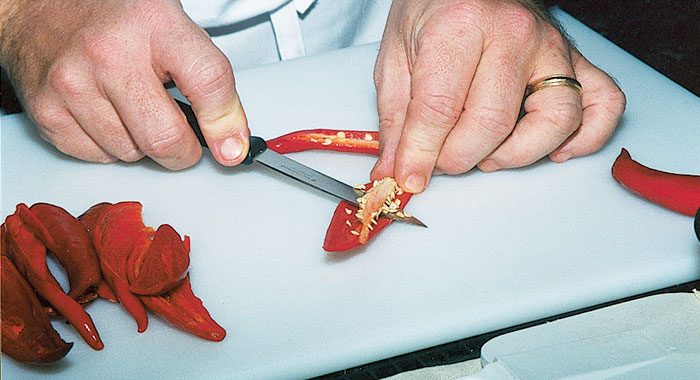
Pronounce it: chill-ee
Part of the capsicum family, chillies come in scores of varieties and colours (from green through to yellow, orange and red) and are one of the most popular spices in the world.
Chillies can be used fresh, dried or powdered, and the level of heat varies from type to type, from sweet and mellow to blisteringly hot – as a general rule, the smaller the chilli, the hotter the taste. The substance that generates the heat is called capsaicin, which is found mainly in the pith and, to a lesser extent, the seeds. But it’s not all about heat – each type has its own distinct flavour.
To cool down the mouth-burn from a too-hot chilli dish, try milk or yoghurt; they’re much more effective than water.
Availability
All year round.
Choose the best
Most fresh chillies should look glossy and firm, but there are exceptions, like cherry hot chillies, which have a wrinkled appearance even when they’re at their peak. But all chillies should be free of blemishes, so avoid any with soft patches or bruises.
Choose your chilli according to the heat degree you want; for instance, Anaheim is mild, jalapeno is medium hot, and Scotch bonnet or bird’s eye are both very fiery.
Chilli powder is in fact a mix of dried chilli peppers plus other spices and salt, which comes in either mild or hot versions. For pure powdered chilli, choose cayenne.
Prepare it
To remove the pith and seed from a fresh chilli, wash it, slice lengthways in two, then cut off the stalk. Using the tip of a knife, cut way the white pith and the harder white core, keeping the knife close to the surface of the flesh. Then scrape out the seeds and discard, before slicing or dicing the chilli, as required. As capsaicin irritates the skin, some people like to wear gloves to do this job. If not, scrub your hands thoroughly afterwards and remember not to touch your face or eyes – even if you’ve scrubbed well, it may well still burn.
Alternatives
Try paprika.
Be the first to comment on "Chilli"